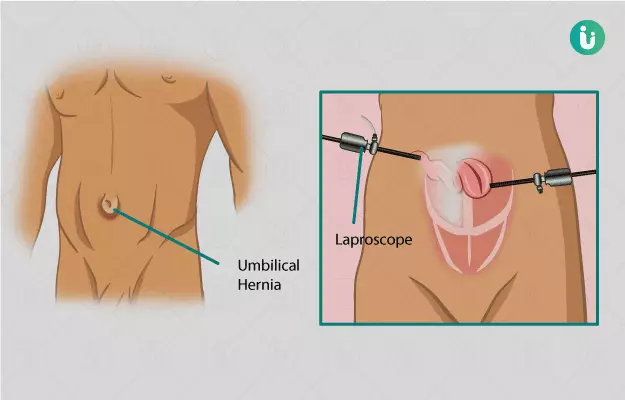After you arrive at the hospital, you will be asked to wear a hospital gown. An intravenous catheter will be inserted into a vein on the back of your hand or your arm to give you fluids and medicines. Before the surgery, you will be given general anaesthesia to help you fall asleep during the surgery. The anaesthesia will be either inhaled as a gas or injected into a vein in the back of your hand in the operating room. The risk of complications from general anaesthesia increases if you have heart, lung, or kidney diseases; are allergic to medicines or smoke or abuse alcohol or medicines.
In individuals who are not eligible for general anaesthesia and have a small hernia, local anaesthesia (only the part that will be operated on is numbed, and you are awake) can be administered.
After administration of anaesthesia, the surgery can be performed by one of two methods, open hernia repair surgery or laparoscopic hernia repair surgery.
Open hernia repair surgery: This method involves the following:
- The surgeon will make an incision (cut) below your belly button.
- He/she will identify the hernia and gently push the protruding intestine back into your abdomen.
- The hernia opening will then be repaired with stitches.
- In the case of umbilical hernia in an adult, the surgeon may place a mesh (material made of thread) in the abdomen to strengthen the area.
Laparoscopic hernia repair surgery: This method involves the following:
- The surgeon will make small cuts (usually three) in your abdomen.
- A laparoscope will be inserted into one of the cuts. A laparoscope is a tiny telescope-like instrument with a video camera that allows the surgeon to look at the organs inside your abdomen on a television screen.
- Next, your abdomen will be filled with carbon dioxide to create space for a better view of your abdominal organs.
- The surgeon will cut the inner lining of your abdomen to expose the weakened area.
- He/she will then identify the hernia sac that contains the bulging intestine and push back the hernia inside your abdomen. If needed, a mesh will be placed in your abdomen to cover the abdominal wall and to strengthen the area.
- After surgery, the small cuts will be closed with surgical tape or stitches.
The laparoscopic method has the following advantages over the open method:
- It requires tiny cuts
- Less pain is experienced after surgery
- Shorter recovery period
After the surgery, the doctor will monitor your pulse, blood pressure, and breathing. You will be allowed to stay in the recovery room until you become stable.
In most cases, you will be discharged on the same day of the surgery. However, surgery of a large hernia may sometimes require a short hospital stay.






































